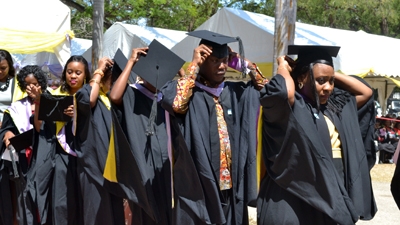DAR ES SALAAM, October 24, 2012 -- Just over two years ago, a student from Mara region in northeastern Tanzania, could spend up to US$350 in travel costs to apply to universities in various regions of the country.
However, the introduction of the International Development Association-funded Central Administration System (CAS) has ensured huge savings for university applicants across the country, especially those from low-income families. Now, the students do not need to undertake any unnecessary and costly travel before actual studies commence.
“For an ordinary Tanzanian, $350 is a lot of money,” said Professor Sifuni Mchome, executive secretary of the Tanzania Commission for Universities (TCU). “People had to incur those costs even when they were not sure whether the program was available at a particular university. They were also not sure about the program requirements because there was no reference point where you could quickly check. Each university operated on its own.”
For women, the challenges are even greater, because the rules are different, Mchome said.
“Unlike with boys, parents are reluctant to allow girls to travel far from home,” he said. “They will tell them to simply go to a ‘nearby’ university and see if they are able to get a place there. If they fail, that could be the end of the story.”
Streamlining the system
As TCU executive secretary, Mchome supervises the pioneering CAS which was introduced in 2010 as part of an overall strategy to improve the quality of and equity in Tanzania’s bustling higher education sector. Enrollment currently stands at just 139,638 annually, about 1.7% of those who leave primary school.
Before the CAS, students living far from regional centers were facing not just travel costs but also application, accommodation and other overheads which could have reached US$709. With the CAS however, students are saving up to US$669 as they now only have to pay up to US$40 dollars, including application fees that are now payable only to TCU.
Using the 2011-2012 application figures, the savings by 36,005 students coming from just 10 remote regions in Mainland Tanzania (out of 21), come to US$24 million which can now be used to cater for other critical needs.
With the internet now accessible not just in most town centers but also by mobile phone, the Mara student, for example, saves almost 100% on transportation and accommodation costs today.
“Now we have people applying through CAS from remote parts of the country without having to travel,” Machome said. “This is very important to the growth of higher education in Tanzania and we have to keep on improving so that more people are taken into our higher education system.”
Encountering the computer
For Francis Marunda, 22, completing his university applications required him to take the family bicycle and ride the two kilometers from his home in Mang’ula (B) village to use his former primary school teacher’s laptop at his home in Kilombero town. Without CAS, he would have had to make the 225km journey from Kilombero to Dar es Salaam, a costly undertaking for his father who works as a livestock officer to support the family of four children.
Marunda, the oldest of the four children, had never used the internet before. It is something that the TCU acknowledges as a challenge for many applicants.
“I had to rely completely on my former teacher to complete the application,” said Marunda, who will embark on his BSC in Building Survery at Ardhi University this month. “I know that most of my friends in our area had the same problem and had to depend on someone else.”
Despite the general lack of internet/computer experience, more students are joining university than would have been possible before CAS. In 2010-2011 when the CAS was just being introduced, there were 43,756 applicants, of whom 37,102 (84.8%) were given places. In 2011-2012, out of 40,150 applicants, 31,381 (78%) were selected, while the latest intake has seen 38,000 (92%) accepted out of 41,312 applicants.
The online application has also enabled the TCU to do away with the problem of multiple selections where students got admitted to up to more than five universities at a time – a situation that was leading to the abuse of the student loan facility and underutilization of slots. In 2009, before the introduction of the CAS, about 20% of applicants had multiple admissions.
“Initiatives such as the CAS are crucial to the development of Tanzania’s human capital in order to safeguard the gains that the government has so far made in stabilizing the macroeconomic environment and in boosting enrolments at primary and secondary level,” said Philippe Dongier, the World Bank’s Country Director for Tanzania. “Nevertheless, Tanzania’s gross enrollment ratio of 2.5% (2006) at a tertiary level is still below the Sub-Saharan African average of five percent, and the flow of inputs into the sector that can improve the general quality of education and of graduates is still a challenge that needs to be addressed.”

